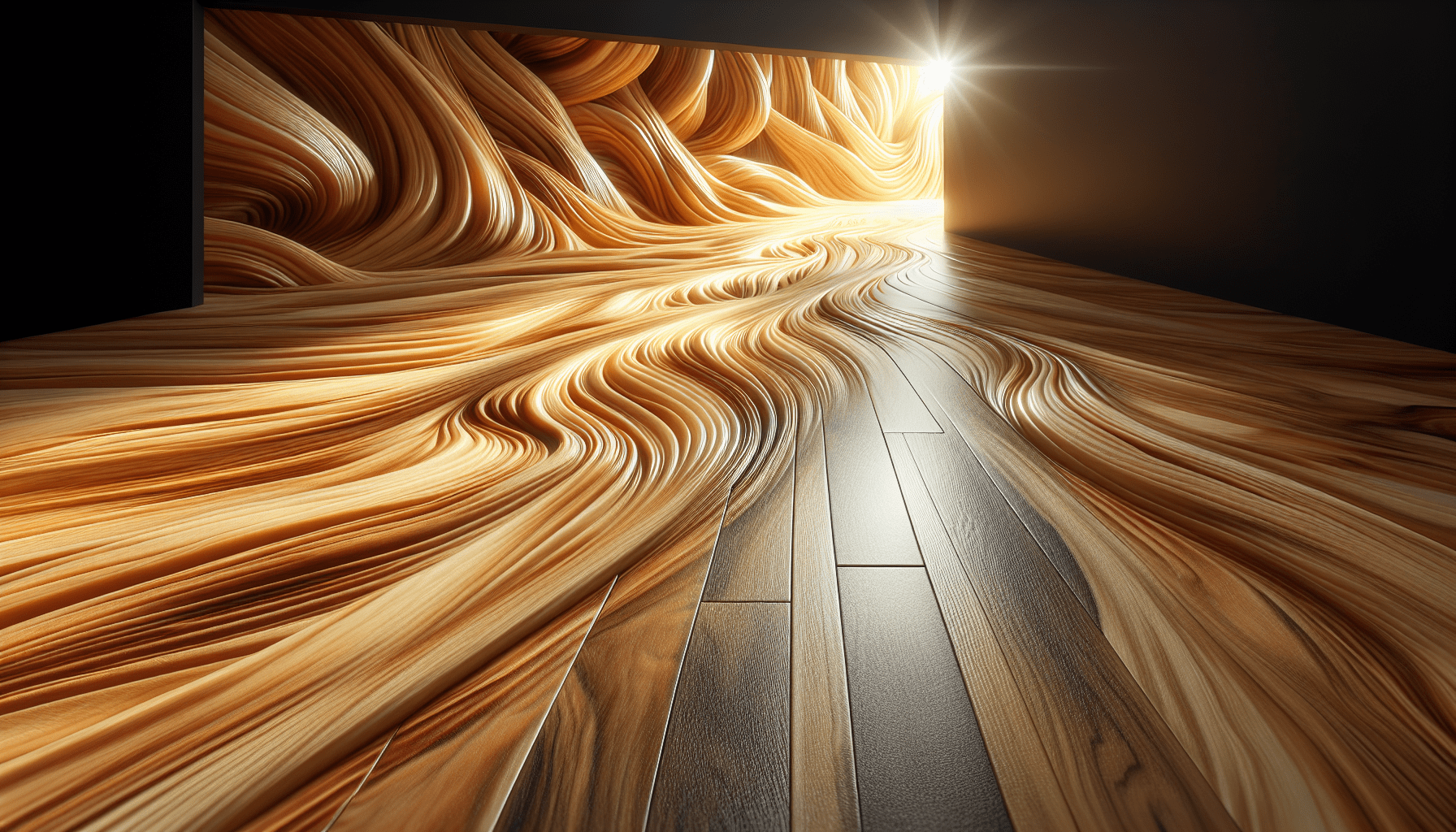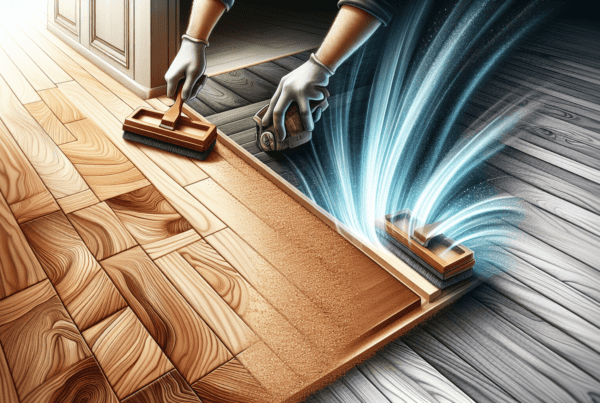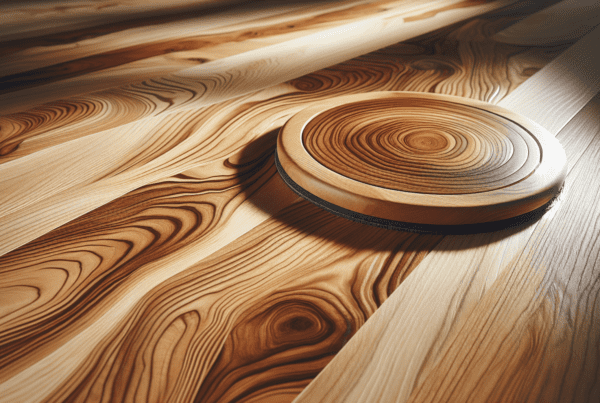Embarking on the journey to revitalize the natural beauty of timber floors in Wellington, we have meticulously crafted a comprehensive guide that stands as your beacon to achieving excellence in timber floor sanding and finishing. This essential handbook is the culmination of expert insights, practical tips, and in-depth knowledge tailored to enhance the splendor of your floors. Through this guide, we aim to empower homeowners with the know-how to breathe new life into their wooden floors, ensuring a finish that not only sparkles with elegance but also withstands the test of time.
Understanding Timber Floor Sanding
Definition and Purpose of Sanding
Timber floor sanding is a process that we undertake to remove the top surfaces of a wooden floor by abrasive materials. The primary purpose of sanding is to eliminate old finishes, smooth out the surface, and prepare it for a new finish. It’s a crucial step in restoring the floor’s appearance and prolonging its life. By sanding, we can also level the floor and remove any imperfections, scratches, or dents, making our floors look as good as new.
Types of Timber Floors and Their Sanding Needs
There are various types of timber floors, including hardwood, softwood, parquet, and engineered wood, each with unique sanding requirements. Hardwood floors, being quite durable, typically withstand multiple sandings, making them ideal for long-term use. Softwood floors are softer and may require a gentler approach. Parquet floors, with their intricate patterns, need careful sanding to avoid damaging the design. Engineered wood floors feature a thin top layer of hardwood over a plywood base and can only be sanded a limited number of times. Understanding the type of floor we have is critical in determining the appropriate sanding technique.
The Sanding Process: Steps and Techniques
The sanding process involves several steps, starting with the removal of the old finish using coarse-grit sandpaper. We then move to medium-grit sandpaper for intermediate sanding, which smooths the floor further. Finally, fine-grit sandpaper is used for the last sanding phase to prepare the floor for the new finish. Proper technique is vital to achieving a uniformly smooth surface without dips or gouges.
Equipment and Tools Needed for Timber Floor Sanding
The essential equipment includes a drum sander, an edge sander for working close to the walls, and a detail sander for corners and hard-to-reach areas. Additionally, we’ll need a variety of sandpaper grits, a vacuum cleaner for dust removal, and protective gear such as masks and goggles. Having the right tools not only makes the job more manageable but also helps achieve the best results.
Preparing for Timber Floor Sanding
Clearing the Area: Tips for Furniture and Fixture Removal
Before we start sanding, it’s important to clear the area completely. This means removing all furniture, rugs, and curtains, along with any artwork or decorations. It’s also wise to seal off the room with plastic sheeting to prevent dust from spreading throughout the house. Taking these steps ensures that we have a clean, unobstructed workspace.
Inspecting the Timber Floor: Identifying Repairs
Once the area is clear, we inspect the floor for any nails, staples, or other sharp objects that could damage the sanding equipment. We also look for loose boards, cracks, and other damage that needs repair before sanding. Addressing these issues upfront helps achieve a smoother, more professional finish.
Cleaning the Floor Before Sanding
Cleaning the floor to remove any dirt, debris, or residues is crucial. We usually sweep and then vacuum the floor thoroughly to ensure that it’s as clean as possible. A clean floor reduces the risk of scratching during the sanding process and helps the new finish adhere better.
Safety Measures and Protective Gear
Sanding can produce a lot of dust, which is not only messy but can also be harmful to our health. Therefore, it’s important to wear protective gear, including a dust mask or respirator, safety goggles, and ear protection. Ensuring good ventilation or using a dust extraction system can also help keep the air clean.
Choosing the Right Finishing for Your Timber Floor
Types of Finishes Available
There’s a wide range of finishes available for timber floors, including polyurethane, oil-based finishes, wax, and water-based finishes. Each type has its pros and cons, affecting the floor’s appearance, feel, and maintenance requirements.
Factors to Consider When Choosing a Finish
When choosing a finish, we consider the level of traffic in the area, the desired aesthetic, and how much maintenance we’re willing to perform. For example, high-traffic areas may benefit from a more durable finish like polyurethane, while living areas may look best with the natural beauty of an oil finish.
Colour and Aesthetics
The finish can also affect the floor’s color and overall look. Some finishes darken the wood or add a glossy sheen, while others preserve the natural look. We think about the existing decor and how we want the floor to complement our space.
Durability and Maintenance Requirements
Durability is another important consideration, particularly in areas that see a lot of use. We also think about how much time and effort we’re willing to spend on maintenance since some finishes require more upkeep than others.
The Timber Floor Sanding Process
Initial Sanding: Removing the Old Finish
The first step in the sanding process is to remove the old finish and any imperfections. We use a drum sander with coarse-grit sandpaper to strip away the top layer, moving evenly across the floor to avoid uneven spots.
Intermediate Sanding: Smoothing the Floor
After the initial sanding, we switch to a medium-grit sandpaper to further smooth the floor. This step helps eliminate any scratches or imperfections left from the first round of sanding.
Fine Sanding: Preparing for Finishing
The final sanding phase uses fine-grit sandpaper to achieve a perfectly smooth surface, ready for the new finish. This step is crucial for ensuring that the finish applies evenly and looks its best.
Cleaning Up After Sanding
Once we’ve finished sanding, we thoroughly clean the floor to remove all dust and debris. A clean floor is essential for a flawless finish, so we vacuum and wipe down the surface until it’s spotless.
Applying the Finish
Preparing the Floor for Finishing
Before applying the finish, we make sure the floor is completely clean and dry. We check the room’s temperature and humidity levels, as these can affect how the finish dries. Following the manufacturer’s instructions is also crucial for the best results.
Application Techniques for Different Types of Finishes
The application technique depends on the type of finish we’ve chosen. For example, polyurethane finishes are typically applied with a roller or brush, while oil finishes may require a rag or buffer. Regardless of the method, even application is key.
Drying and Curing Times
Each finish has its own drying and curing time, which can range from a few hours to several days. It’s important to allow enough time for the finish to dry completely before applying additional coats or walking on the floor.
Achieving a Professional-looking Finish
For a professional-looking finish, we apply the finish evenly and according to the manufacturer’s directions, taking care not to leave any streaks or bubbles. Careful planning and patience during application and drying help achieve the best look.
Aftercare: Maintaining Your Timber Floor
Regular Cleaning and Maintenance Tips
Regular cleaning with a soft broom or vacuum keeps dirt and grit from scratching the floor. We also recommend using cleaning products designed for timber floors to maintain the finish and protect the wood.
Dealing With Scratches and Dents
For minor scratches and dents, touch-up kits or spot sanding can be effective. For deeper damage, it may be necessary to sand and refinish the affected area.
When to Refinish Your Timber Floor
Over time, floors may begin to show wear and tear, such as fading or dullness. We usually consider refinishing when regular cleaning no longer restores the floor’s appearance or if there are significant scratches and dents.
Using Rugs and Mats to Protect High Traffic Areas
Rugs and mats can help protect floors in high-traffic areas, reducing wear and tear. We choose mats designed for use on timber floors to prevent any damage from rubber backing or harsh materials.
Troubleshooting Common Timber Floor Issues
Dealing With Cupping and Crowning
Cupping and crowning occur due to changes in humidity levels, causing the wood to expand and contract. We address the underlying cause of the moisture imbalance and may need to sand and refinish the floor once it stabilizes.
Addressing Cracks and Splits in the Wood
Small cracks and splits can often be filled with wood filler and sanded smooth. However, larger issues may require replacing the damaged boards before refinishing the floor.
Resolving Stains and Discoloration
Some stains can be removed by sanding, while others may require special treatments or products. Identifying the type of stain is the first step in finding the right solution.
Fixing Squeaks and Creaks in Timber Floors
Squeaks and creaks are usually caused by loose boards or subfloors. Fixing these issues may involve tightening the boards, adding support beneath the floor, or using specialized products to reduce noise.
Hiring Professional Timber Floor Sanders
Benefits of Hiring a Professional
Hiring a professional can ensure that the job is done correctly and efficiently, with minimal risk of damage to the floor. Professionals have the experience, tools, and knowledge to achieve the best results.
What to Look for in a Timber Floor Sander
When hiring a professional, we look for experience, licensing and insurance, references, and a portfolio of previous work. Communication and transparency about costs and timelines are also important.
Understanding Quotes and Services Offered
Professional quotes should be detailed, outlining the services provided, the cost of materials, and the timeline for the project. We compare quotes from several providers to ensure we’re getting the best value.
Working With Your Professional: Communication and Expectations
Clear communication with our professional ensures that we’re on the same page regarding the project’s scope, timeline, and expected results. We discuss any concerns or questions upfront to avoid misunderstandings.
DIY Tips for Timber Floor Sanding and Finishing
When to Consider a DIY Approach
A DIY approach can be a cost-effective option for those who have the time, patience, and tools to do the job. However, we consider our skill level and the project’s complexity before deciding to tackle it ourselves.
Essential Tools and Materials for DIY Sanding and Finishing
For a DIY project, we’ll need a drum sander, edge sander, detail sander, a variety of sandpaper grits, a vacuum, and the chosen finish. Protective gear and proper ventilation are also essential.
Step-by-Step Guide for DIY Enthusiasts
We start with coarse-grit sandpaper to remove the old finish and work our way to fine-grit for a smooth surface. Ensuring even sanding and thorough cleaning between steps is crucial. We follow the manufacturer’s instructions for applying the finish, allowing adequate drying time.
Common Mistakes to Avoid in DIY Floor Sanding and Finishing
Common mistakes include not removing all furniture and fixtures, failing to seal the room properly, sanding unevenly, and not allowing enough time for the finish to dry. Taking our time and following instructions can help avoid these pitfalls.
Cost Considerations for Timber Floor Sanding and Finishing
Estimating the Cost of Floor Sanding and Finishing
The cost can vary widely depending on the floor’s size, the type of finish, and whether we’re hiring a professional or doing it ourselves. Getting multiple quotes can help gauge the project’s cost.
Factors That Influence Cost
Factors include the floor’s condition, size, and layout; the type of sanding and finishing required; and regional labor rates. Additional repairs or intricate floor patterns may also increase the cost.
How to Budget for Your Timber Floor Project
We start by determining the scope of our project and getting estimates for the work. Setting aside extra funds for unexpected issues can help ensure the project stays on budget.
Comparing DIY Costs vs. Professional Service Costs
A DIY project will typically cost less in terms of labor but may require investment in tools and materials. When comparing costs, we also consider the value of our time and the potential benefits of professional expertise.







